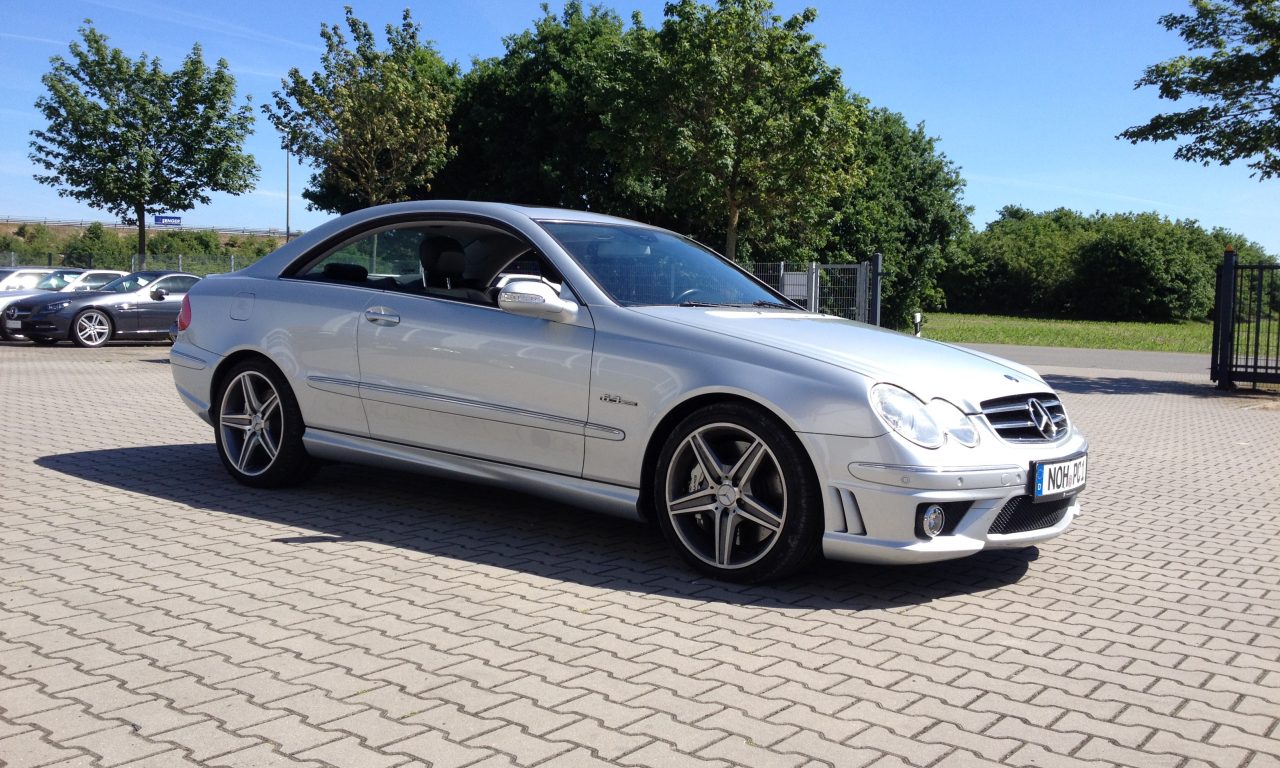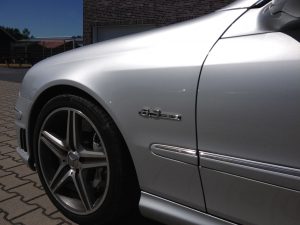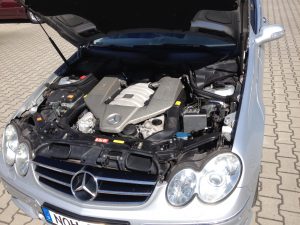The Mercedes CLK63 AMG is small brother of the CL. That is the way look to the car. off course it has a of comparisions with the C klasse and it is based on it but it is just a small CL. This generation is better looking then the older model I think and with this engine setup the car is better then ever
this Video is al about the Mercedes CLK63 AMG. powered by a 6208cc DOHC V8 producing 481HP and 630NM
0-100 klm is possible in 4.7 sec
this car was for sale at Passioncar.de. this company is a specialist in rare youngtimers and classics or/and low mileage cars
here is a link to the website have a look for more nice cars
https://www.passioncar.de/
this is the second generation CLK and i think it has a much better roof line . before 2006 the clk AMG had a 5,5 v8 from 2006 the car had 6208cc v8 a very nice NA engine. that is delivering a very high torque level. over the full range so also a lower rpm the engine is still nice to drive without shifting back Always also with the 7 speed transmission low rpm on the highway gives the car a very good cruiser feel and is not to noisy. but when you want to hear the engine just push the throttle deep and it will come to live.
these cars are much more rare then the c63 models so at my opion as better as a investment car. i think if this car is kept as a summer Sunday driver it will not drop in value and will go upin price in a few years.
don’t forget to have a look in the AMG playlist for the other cars I have driver from this house tuner of Mercedes. The have done a lot of very cool stuff!!
if there are any question just ask
JMSpeedshop !
A pretty complete list of engine problems and most common can be found in this link to FCP EURO or below
Common Issues of the Mercedes-Benz M156 Engine:
- Crankcase Breather Valve – The crankcase breather valve fails in two main ways. The first and most common is that the diaphragm on the valve itself deteriorates. The other failure method is that the hose from the crankcase to the valve becomes brittle and develops cracks. Deterioration of this assembly leads to increased burning of oil, misfires, and heavy smoke from the tailpipe.It is common to have a fault code (P0170) that is for fuel trim.
A general maintenance interval for your crankcase breather valve is right around 60,000 miles.
To replace your crankcase breather valve, it’s necessary to remove your intake manifold in tighter engine bays such as the C63. This job should be able to be carried out in about thirty minutes. Although some use this opportunity to install an oil catch can system, we do not see many of these vehicles suffering from excessive oil in the manifold or sludge behind the intake valves.
We have an affordable kit that addresses all of the components you will need to replace when replacing your crankcase breather valve.
- Oil Leaks – The most common source of oil leaks on the M156 are the valve cover gaskets, camshaft solenoid cover gaskets, and oil filter housing gaskets. Valve cover and camshaft solenoid cover gaskets should be replaced concurrently. If these oil leaks are left unattended, they will damage peripheral components such as the alternator, drive belt pulleys, drive belt, air conditioning compressor, and transmission cooling hoses to name a few.
- Camshaft Adjusters – When the camshaft adjusters no longer hold hydraulic pressure, it will manifest itself first as a noise typically at cold start and progress to noise at any engine RPM cold or at operating temperature. This camshaft adjuster rattle is most prevalent on the intake camshaft adjusters and is observed mostly on engine startup.
- Drive Belt Pulleys – All of the pulleys on the Mercedes-Benz AMG M156 engine are a plastic design with a pressed on bearing. Although idler pulley failure is common across most Mercedes-Benz platforms, we recommend checking pulleys for failure symptoms at each oil-change interval. Pulley failure will damage the drive belt, and when that happens, the belt typically damages the coolant breather port on the thermostat. If you let that happen, you will have to replace a thermostat, and thermostat breather line in addition to the drive belt components.
- Cylinder Head Bolts – Most Mercedes-Benz AMG M156 equipped models (up to model year 2012) have cylinder head bolts that have the propensity to break,allowing coolant to enter the combustion chamber. Early warning signs include a low coolant light, misfires, and a check engine lamp. We recommend all engines equipped with the older design bolts be updated. The cutoff for engines not affected by this design flaw is serial number 60-060658.
- Camshaft and Hydraulic Lifters – Camshaft replacement should be considered a regular maintenance task as most camshafts show wear failures around 100,000 miles. Wear occurs most commonly on the left and right intake camshafts and if left unattended, the cam lobe will eat through the hydraulic lifter. Frequent oil changes, using the correct oil viscosity for your climate, and including an anti-wear additive with oil changes are all measures we recommend to protect your engine. Additionally, higher mileage engines should have their oil sent out for analysis periodically or the valve covers should be removed and camshaft lobes inspected for signs of wear.
- Intake Manifold Failure – The intake manifold on the M156 is constructed of a cast magnesium alloy, contains an adjustable length runner assembly, and houses the engine’s twin throttle bodies. The center mounting plate that houses the throttle bodies deteriorate causing rough running particularly at idle.
- Mercedes-Benz AMG M156 Intake Manifold
- Since the intake manifold is quite expensive and often back-ordered, there is an aftermarket option available that just replaces the center-plate.







